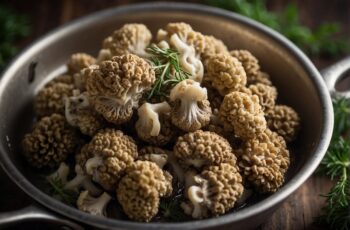Mistakenly foraging for the wrong mushrooms can lead not only to disappointment but also to serious health consequences. That’s why distinguishing true Chicken of the Woods mushrooms from their misleading counterpart, False Chicken of the Woods, is crucial for your safety. While Chicken of the Woods is a sought-after edible mushroom with a meaty texture and taste, its doppelganger is not considered edible and can be toxic. You should learn the nuanced visual cues that set them apart before setting out to forage.
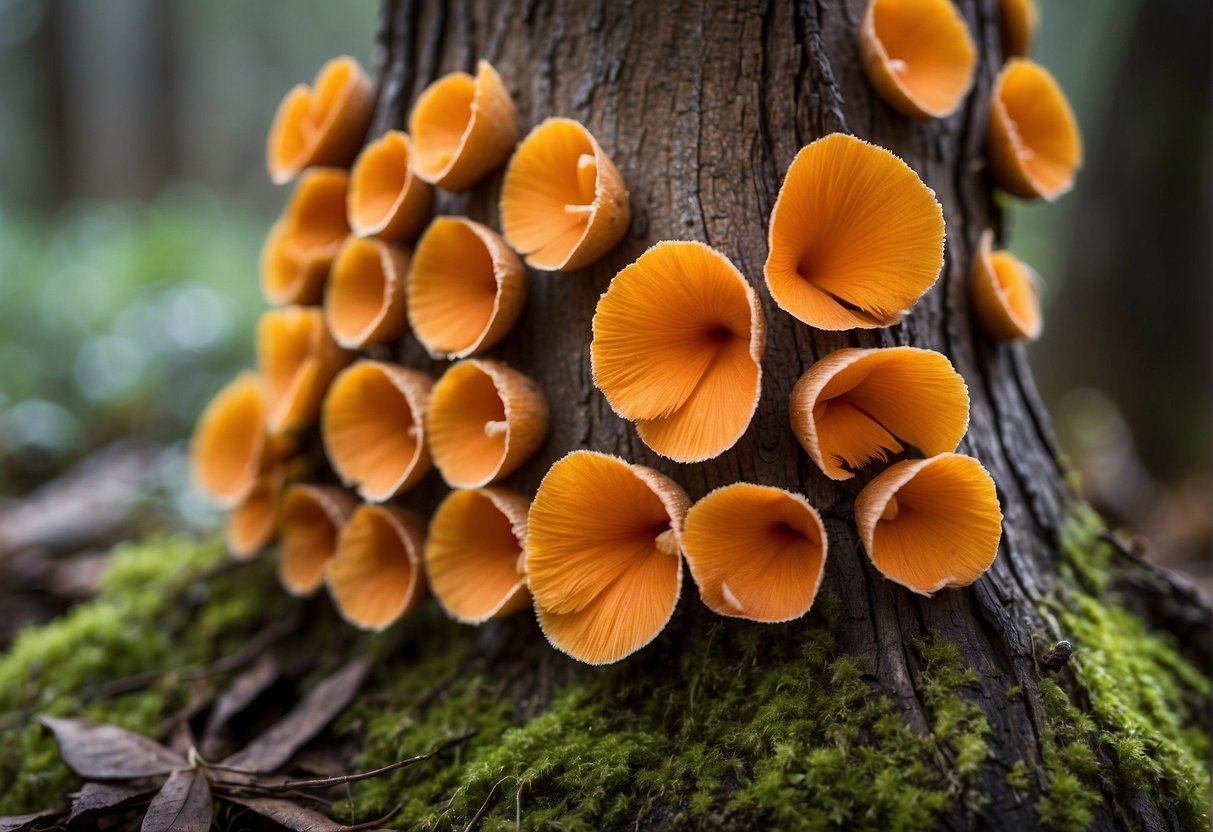
Understanding the specific characteristics of False Chicken of the Woods is essential in making safe choices while foraging. This bracket fungus, often found on decaying hardwood trees, can be identified by its distinct lack of the vibrant orange color that is characteristic of true Chicken of the Woods. An expert eye can spot the differences in texture and color that are key to proper identification. Additionally, knowing the habitat and growth patterns of these mushrooms will better equip you to avoid the inedible variety and focus on the safe, delicious species.
Key Takeaways
- False Chicken of the Woods is not edible and its identification is essential for safe foraging.
- Accurate knowledge of mushroom characteristics is key to distinguish between true and false varieties.
- Awareness of growth patterns and locations can guide you to forage safely and sustainably.
Identification and Characteristics
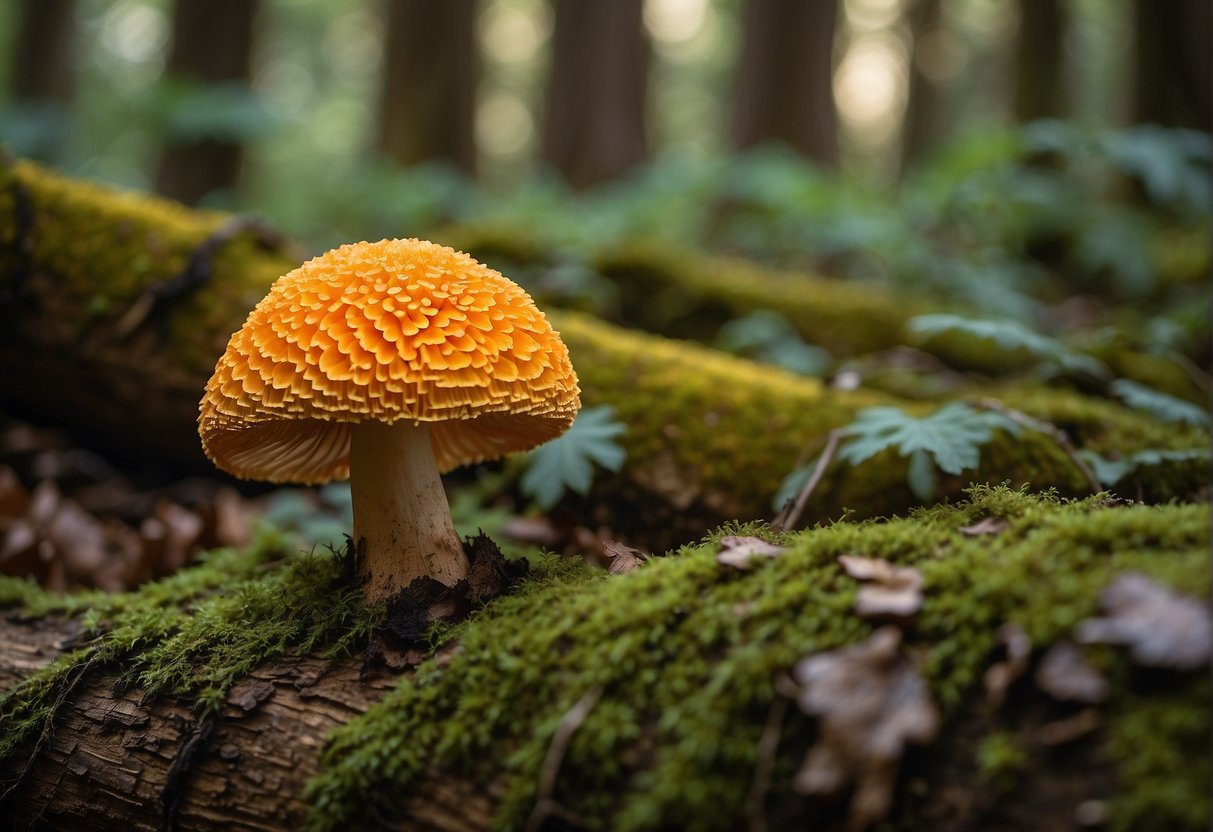
When embarking on a quest to identify the elusive False Chicken of the Woods, it’s critical you know the specific traits that distinguish it from its non-toxic counterpart, Laetiporus sulphureus. Precision in identifying visual features, analyzing spore prints, and understanding its natural habitat is essential for your woodland explorations.
Visual Features
False Chicken of the Woods, unlike the true Chicken of the Woods mushroom, often lacks the vibrant orange color that characterizes the latter. Its cap is typically more subdued in hue, ranging from a pale orange to yellow. The caps form in a fan-shaped tier, which could mislead the untrained eye. Here are the key visual traits:
- Color: Yellowish to pale orange
- Shape: Fan-shaped
- Pores: Noticeably smaller and tightly packed
- Bruising: When bruised, the color change is less pronounced than in Laetiporus sulphureus
Spore Print Analysis
The spore print is a telltale sign for differentiating species within the polypore family. For False Chicken of the Woods:
- Color: A spore print will generally yield a white to light cream color.
- Technique: You’ll need to place the cap, pores down, on a piece of dark paper to get a visible print.
Habitat and Distribution
This particular fungus prefers the company of hardwood, so you’ll find it mainly on dead or dying trees such as oaks and maples. Its presence isn’t as widespread as the edible version, and its appearance often indicates the health of the surrounding forest:
- Preferred Trees: Oaks, Maples, and other hardwoods
- Geographical Spread: More common in North America and Europe
By familiarizing yourself with these details, you’ll be better equipped to decipher the mysterious False Chicken of the Woods from its esteemed look-alikes and enjoy a successful forage.
Health Benefits and Risks
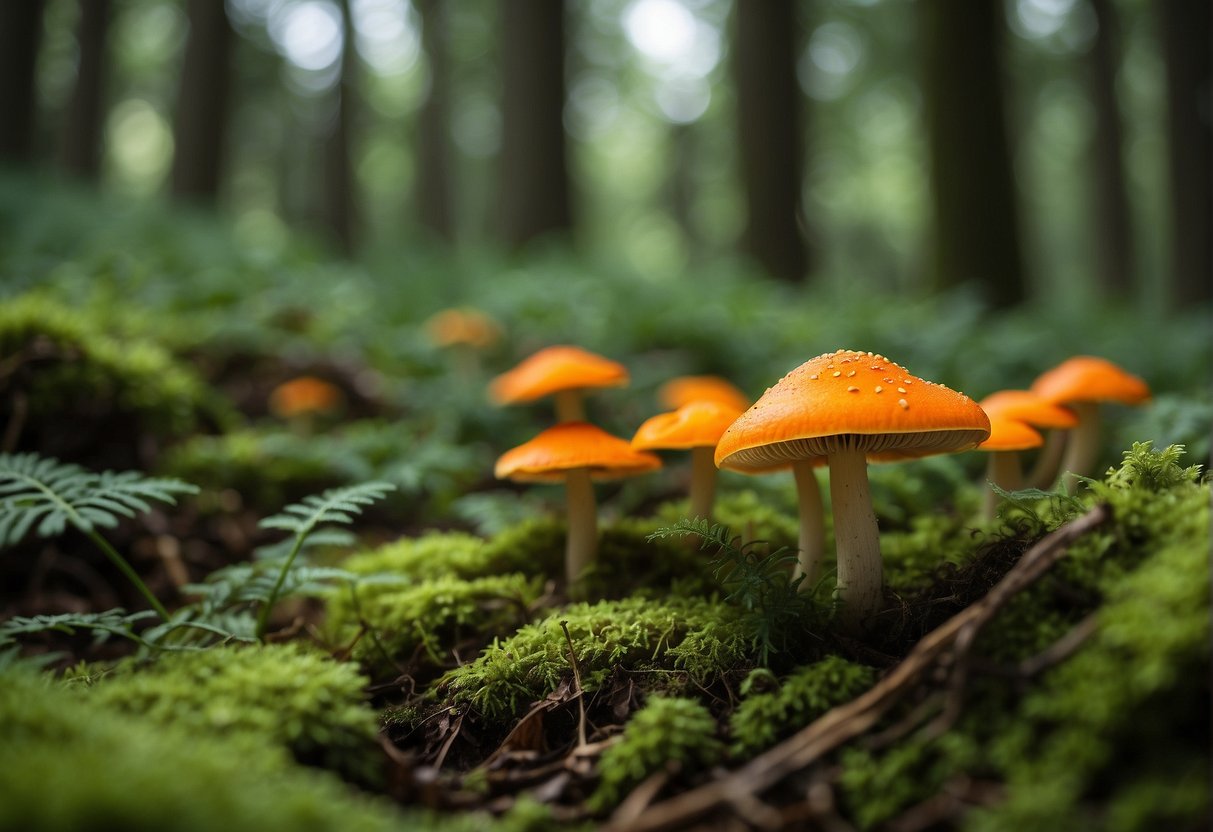
Before you embark on mushroom foraging, it’s critical to understand both the culinary uses and potential dangers associated with mushrooms like the false chicken of the woods. Your safety and enjoyment hinge on this knowledge.
Culinary Uses
The false chicken of the woods is not edible and does not offer the meaty taste and versatility that its lookalike, the true chicken of the woods, provides. As an outdoorsman, you might be enticed by its appearance, but bear in mind, it lacks the culinary uses that mushroom enthusiasts seek.
Potential Dangers
Identifying mushrooms can be tricky; false chicken of the woods has lookalikes which can lead to confusion. Consuming this mushroom can result in adverse reactions like gastrointestinal distress and allergic reactions. These might not just ruin your outdoor experience but also threaten digestive health. It’s pivotal to distinguish edible varieties to avoid digestive issues and ensure your foraging leads to a hearty meal rather than a health risk.
Foraging Tips and Conservation
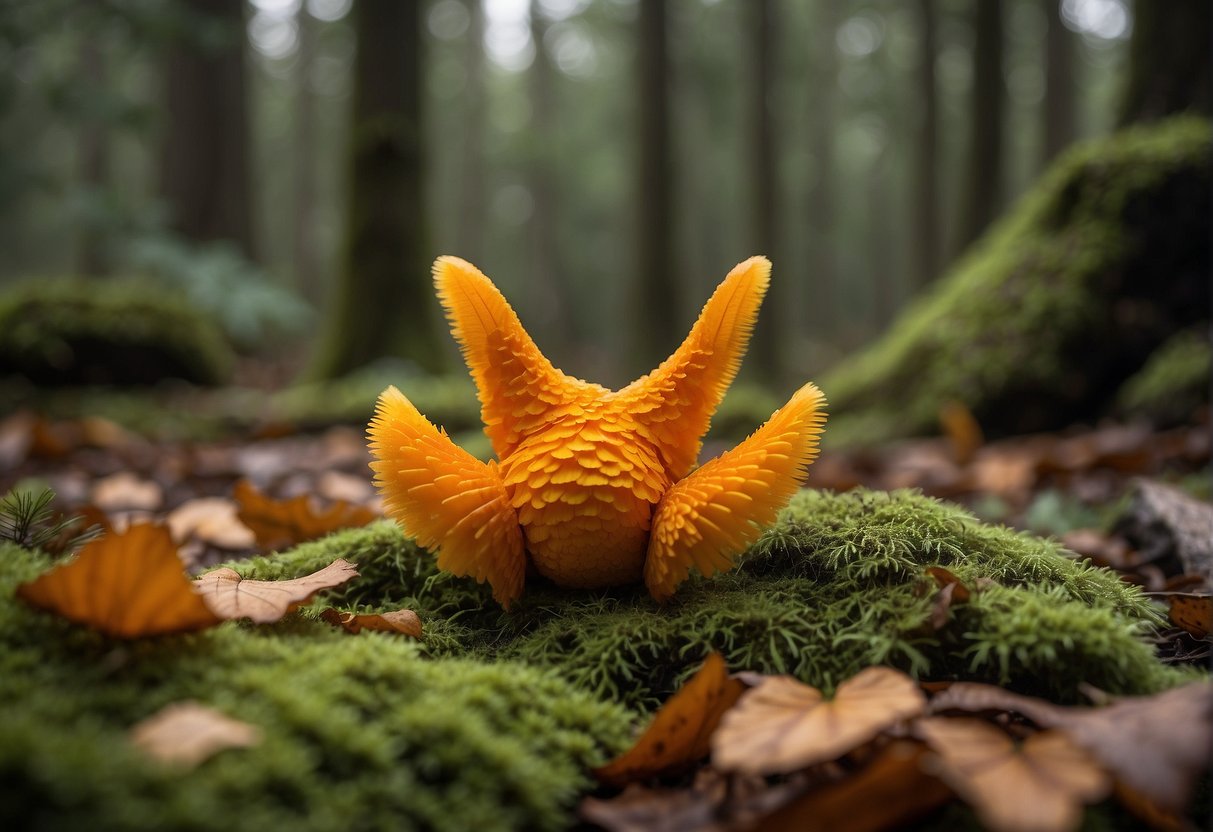
When foraging for mushrooms like the false chicken of the woods, it’s essential to prioritize sustainable practices and be aware of the best time frames to harvest. This ensures the conservation of the species and the forest ecosystem.
Best Season for Harvesting
The optimal time for harvesting false chicken of the woods is during the late summer to fall. This is when these large, colorful bracket fungi are most likely to be found growing on hardwoods like oak trees and sometimes on conifer stumps throughout the forests.
Sustainable Foraging Practices
Sustainable foraging is key to preserving wild mushroom populations and forest health. Here are some guidelines to follow:
- Size Matters: Only harvest mushrooms that have reached a considerable size to allow for spore dispersal, increasing the chances for future growth.
- Leave Some Behind: Always leave several brackets on the tree or stump to ensure the fungi can continue to grow and reproduce.
- Be Tree-Friendly: Avoid damaging the trees and bark where mushrooms are growing, as this can harm the tree and reduce future mushroom yield.
- Ecosystem Awareness: Understand that mushrooms are part of a larger ecosystem. Disturbing one part can have ripple effects throughout the forest.
By adhering to these practices, you contribute to the health of the woods and ensure that foraging can be enjoyed by future generations.
Culinary Applications and Recipes
Before you set out to cook with false chicken of the woods, it’s essential to know that while their culinary potential isn’t as prized as the true Chicken of the Woods, there are still ways to prepare this mushroom. The firm texture and earthy flavors can mimic meaty ingredients like crab or lobster when cooked correctly.
Preparation Methods
To begin, clean your false chicken of the woods mushrooms carefully—brush off any dirt or debris and give them a quick rinse if needed. It’s crucial to remember that this mushroom should be cooked thoroughly before consumption to avoid any possible discomfort, as some can have adverse reactions to it. The flesh of the mushroom is firm, making it suitable for various cooking methods:
- Sauteing: A quick sauté with butter or oil allows the mushroom’s texture to shine, giving it a satisfying bite.
- Boiling: For soups and stews, boiling the false chicken of the woods helps to infuse flavors and tenderize the flesh.
- Marinating: Enhance the mushroom’s natural flavors with a robust marinade before cooking, befitting of its hearty texture.
Popular Recipes
Experiment with these recommended recipes to unlock the potential of your foraged finds:
-
Mushroom Stir-Fry: after slicing the false chicken of the woods into thin strips, stir-fry them with your favorite vegetables for a quick and hearty meal.
-
Mushroom Seafood Boil: to create a seafood-like experience, cook the false chicken of the woods with spices reminiscent of a crab or lobster boil, immersing them in a seasoned broth for deep flavor.
Bear in mind, while you can incorporate false chicken of the woods into recipes typically suited for their true counterpart or even maitake mushrooms, often referred to as hen of the woods, always ensure they’ve been properly identified and that you’ve sampled a small amount first, as individual tolerances can vary.


